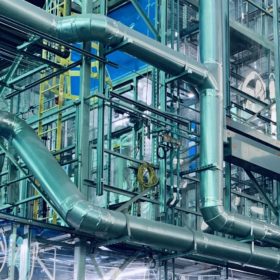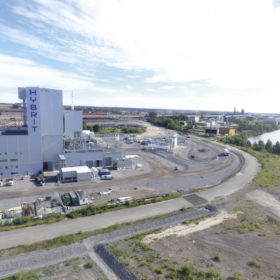Building the green hydrogen economy in India
Experts at a recent workshop by industry body India Hydrogen Alliance (IH2A) and the government thinktank NITI Aayog proposed the formation of a public-private taskforce to develop gigawatt-scale green hydrogen hubs in India. The taskforce will have participation from global funding agencies, industry and government.
Ohmium to sponsor CSIR-CECRI research on advanced materials for electrolyzers
Ohmium has collaborated with India’s CSIR-Central Electrochemical Research Institute as it aims to make green hydrogen not only cost-effective but also scalable to meet the world’s demand. The sponsorship enables it to leverage CSIR-Central Electrochemical Research Institute’s deep expertise and resources for further development of electrolyzer technology.
Power ministry notifies green hydrogen policy
The Green Hydrogen Policy is designed to promote green hydrogen and green ammonia projects with provisions like 25-year waiver of inter-state transmission (ISTS) charges and ISTS connectivity on priority for renewable energy capacity set up for the purpose.
India and Australia sign letter of intent on solar, ‘clean’ hydrogen
India and Australia have signed a letter of intent to cooperate on scaling up the manufacture and deployment of ultra-low-cost solar and clean hydrogen.
India, Denmark to fund joint R&D projects on green hydrogen fuels
The Department of Science & Technology, Government of India, and the Innovation Fund Denmark (IFD) have collaborated to fund Indian and Danish researchers on the joint development of green fuels including green hydrogen.
Water-based electrolyzer for green hydrogen production
Verdagy has secured a $25 million investment for its new electrolyzer technology, which provides hydrogen fuel for heavy industrial applications. The membrane-based technology uses large active area cells, high current densities, and broad operating ranges to deliver hydrogen at scale.
India’s technology path key to global steel decarbonisation
The global steel industry is poised to shift from coal to hydrogen. With enough high-quality iron ore and low prices for hydrogen, India could play a pivotal role in global steel decarbonisation given its large and growing economy.
Electrolyzer sales expected to quadruple this year globally
According to BloombergNEF, electrolyzer shipments may reach up to 2.5GW in 2022, up significantly from 458MW last year. China and the United States will become the world’s first and second markets, respectively.
Making cheaper H2
The hype surrounding green hydrogen is real, but does the cost-reduction outlook for its production technologies live up to it? Christian Roselund looks at the technology, transportation, application and enabling policies behind the promising green energy carrier.
Green hydrogen could disrupt global trade, bilateral energy relations
While there are still many uncertainties as to the way in which hydrogen trade might evolve and change economic ties and political dynamics between countries, experts agree that green hydrogen can bring winds of change to the global energy arena. According to the International Renewable Energy Agency, significant geoeconomic and geopolitical shifts are just around the corner.















